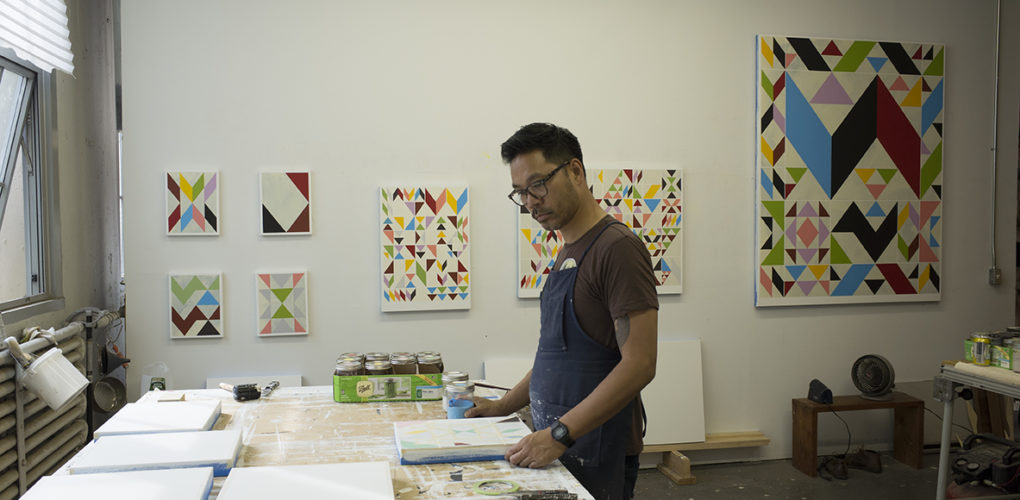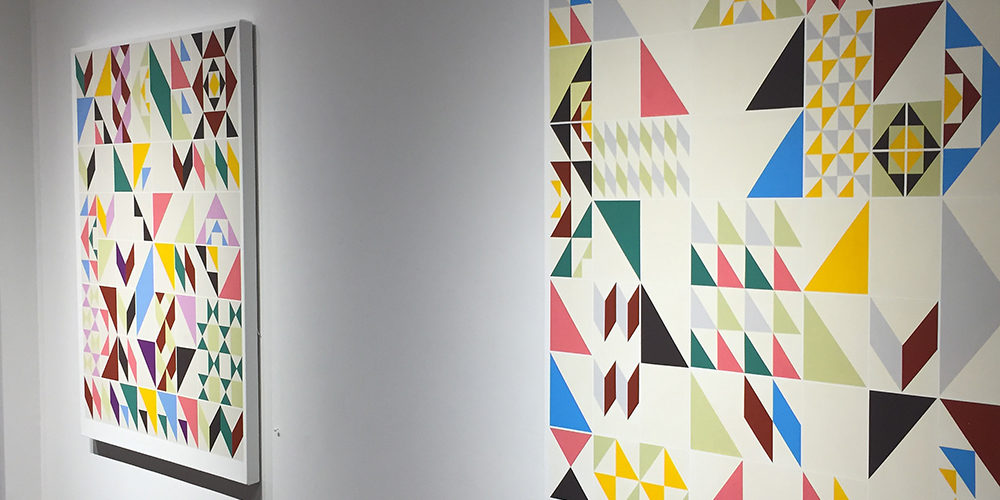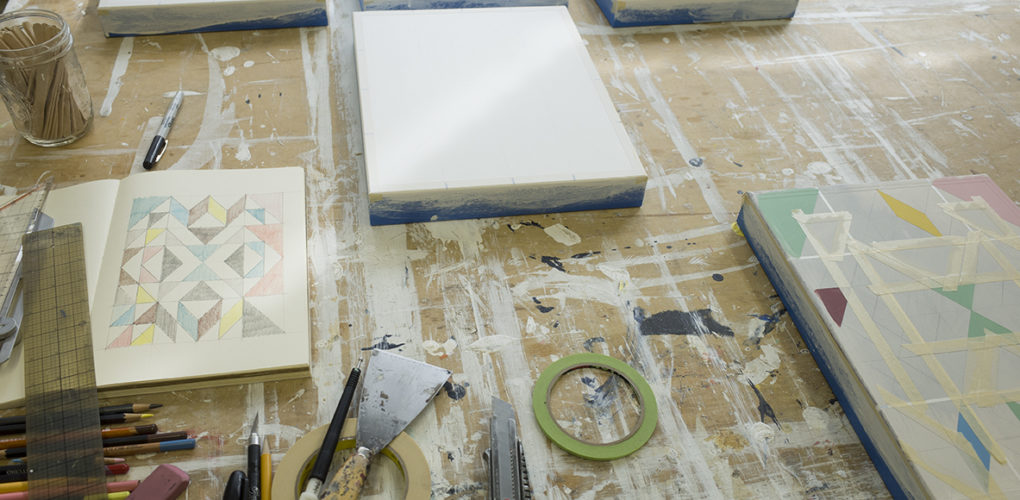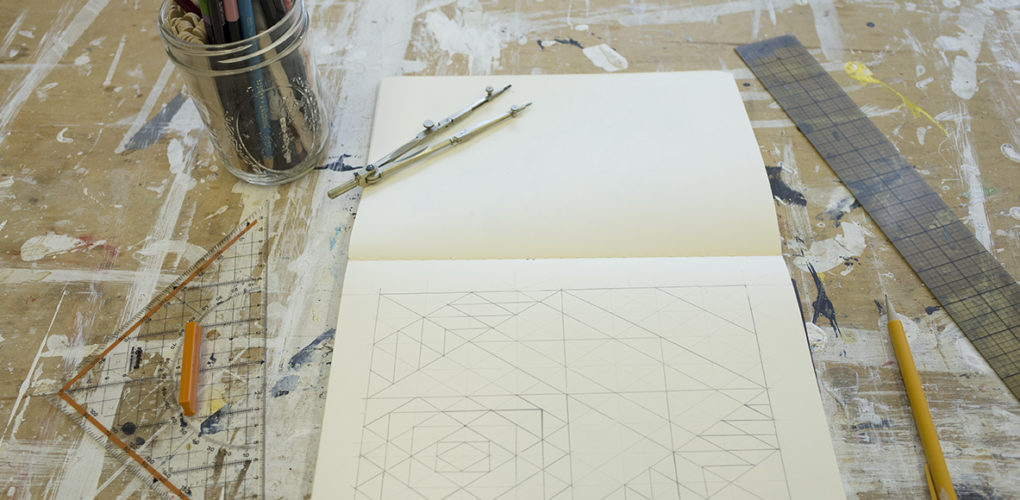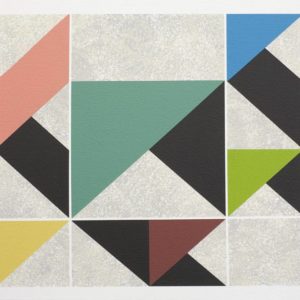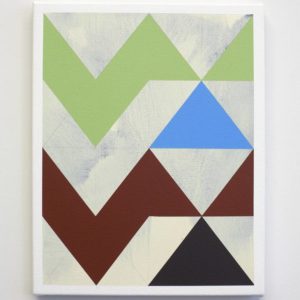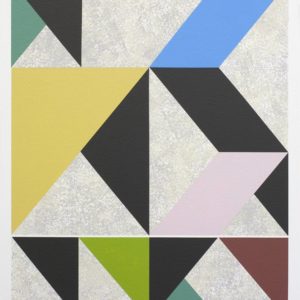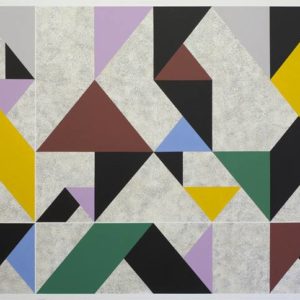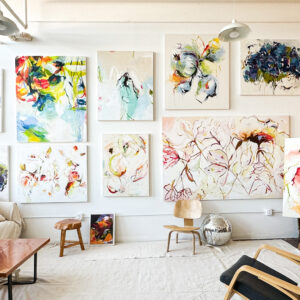Inside the Studio
 The Visual Language of Christian Nguyen
The Visual Language of Christian Nguyen
What are the major themes you pursue in your work?
My paintings explore how language as a concept is created. The cuneiform tablets written on clay originated by the Sumerians (3,500 BC) developed as a way to catalog and inventory trade as societies became larger and more complex. Even though people had developed verbal language, the written form was still rudimentary.
Looking at cuneiform tablets give clues to how written language originated. Using a triangular stamp, repetition and patterns were created out of this triangular stamp to form the first symbols for various things. The abstract modes of pattern and repetition, variation and combination are the modes I use in my paintings to create the visual images you see.
Another theme I explore is connection between image and space. As early as humans could draw, they did this on cave walls. As societies became more complex, the tendency remained the same – to exist in the magical space of the image – we just replaced the cave with cathedrals, temples, and palaces.
How did you first get interested in your medium, and what draws you to it specifically?
I am painting because it is direct and the surface is an actual surface. What you see on that surface is only limited to what you can detect with your senses, your sensitivity, and your intellect.
How has your style and practice changed over the years?
I have been making art for almost three decades and even though I have explored many mediums, I feel that the central themes have remained the same.
I graduated Cooper Union as a photographer and worked as an architectural photographer. I worked briefly at the American Museum of Natural History documenting the Native American collection and that inspired me to make unique objects. My relationship with a reproducible media came to an end and my practice as a studio artist began with my MFA at Hunter College – I wanted to make unique objects.
Within the studio practice, I worked with architecture as a central theme working with installation and large canvas drawings. In more recent years I moved towards abstract work because elements of language, of seeing, of thinking are abstract. The narrative formed between these elements are continually shifting and made up by the viewer. The evolution of my practice is reflected in the work to become more essential.
Can you walk us through your process? Do you begin with a sketch, or do you just jump in? How long do you spend on one work? How do you know when it is finished?
My process is continuous… I am always working, because the end of a painting is the beginning of the next. I never try to reproduce a painting that is successful but try to make an authentic experience with each new canvas. I generally begin with a concept sketch, or a color chart study or both. Questions raised in the previous work is explored in the next painting.
I challenge the process by changing the scale – either in physical or optical size. This is important just as an architect must build from a drawing, but then also create more ambitious drawings to build more complex spaces. What works small may not work large – the process attempts to understand the why and how something becomes stimulating.
A painting generally takes a few days to a week to make. The work feels done when I can no longer add to it.
If you couldn’t be an artist, what would you do?
I would be a musician. With music, you can’t walk into a room and play the piano for the first time. All the foundational things have to be there – ability, practice, work. These are important principles, and you can hear a fake right away. It seems that art is sometimes mired by subjectivity and not quality – what is new seems more important that what is good. You can sell a bad painting but you’d never listen to someone playing out of tune.
What are some of your favorite experiences as an artist?
I feel very lucky to be an artist – it is not the freedom but the intensity in which you get into something. The reward is immediate in the act of working. You create something and you are the first person to see it at the moment it is created.
